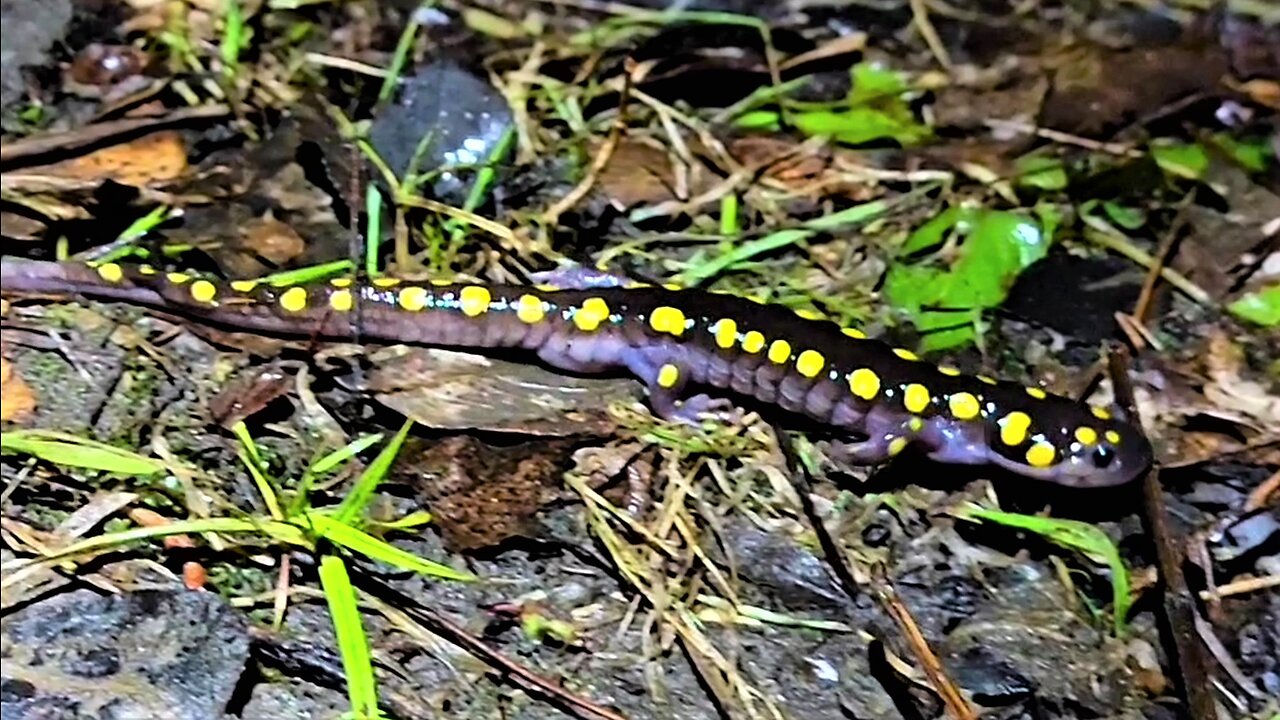Premium Only Content

Yellow spotted salamander makes dangerous trek once each year
The spotted salamander is abundant in the forests of North America, yet they are rarely seen. They hide underground, or deep under leaf litter, feeding on worms and insects at night, usually without venturing into the open. They emerge during breeding season in March to May each year, when the ice has barely melted on the nearby vernal ponds.
The salamanders leave their cover to make their way en masse to the water where they breed. On a rainy night, as if every salamander for miles is answering the same call, on the same schedule, they begin a trek over open ground. It is a trip that renders them vulnerable to predators. But nature calls and the salamanders such as this one will answer that call.
The eggs are laid in the vernal pools where they develop and hatch into tadpoles. The eggs of the spotted salamander hold a symbiotic relationship with an algae that grows within them. This provides energy and oxygen as the eggs mature. This is necessary because some of the eggs have a membrane that will not allow for oxygen to pass through from the surrounding water.
Salamanders can live for up to 32 years in the wild. They must remain sheltered from the sunlight during that entire time.
Their skin must remain moist for them to survive.
-
 LIVE
LIVE
Phyxicx
3 hours agoRocket League with Friends! - 11/22/2024
118 watching -
 LIVE
LIVE
STARM1X16
3 hours agoFriday Night Fortnite
107 watching -
 29:51
29:51
Afshin Rattansi's Going Underground
18 hours agoJimmy Dore on Ukraine & WW3: Biden Wants a War that Trump CAN’T Stop, ONLY Hope is Putin’s Restraint
56.7K18 -
 DVR
DVR
Fresh and Fit
5 hours agoExposing WHO Killed JFK w/ Cory Hughes & Tommy Sotomayor
72.6K23 -
 LIVE
LIVE
RanchGirlPlays
5 hours ago🔴 Red Dead Redemption: Let's go help De Santa 🤠
215 watching -
 LIVE
LIVE
Man in America
11 hours agoWHAT?! Trump & the Fed are DISMANTLING the Global Banking Cartel!? w/ Tom Luongo
2,112 watching -
 LIVE
LIVE
HELMET FIRE
1 hour agoDEADROP IS BACK!
118 watching -
 LIVE
LIVE
I_Came_With_Fire_Podcast
6 hours agoLive Fire (No Exercise) with DAN NUNN!!!
230 watching -
 1:57:20
1:57:20
Glenn Greenwald
7 hours agoBiden's Escalation Of The War In Ukraine With Scott Horton; Lee Fang On The Junk Food Industry Sabotaging RFK Jr.'s Plans & The Gaetz Situation | SYSTEM UPDATE #371
77K77 -
 LIVE
LIVE
Toitle
1 hour agoLet's Game | TOITLE HEADS, POKE OUT | WE BE GRINDIN
136 watching